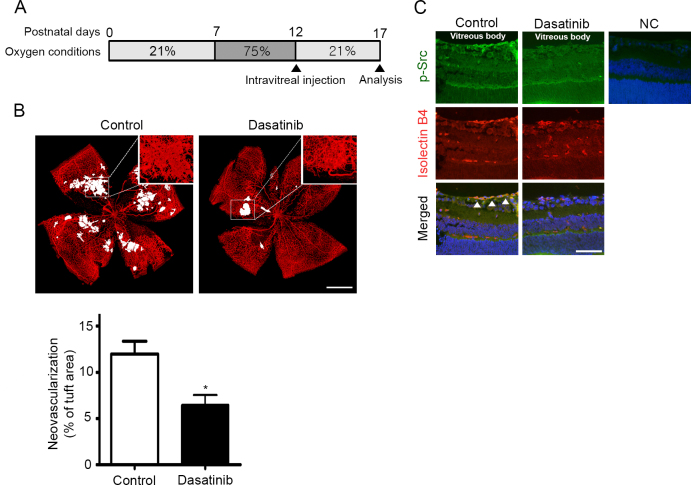Figure 2.
Dasatinib reduces retinal neovascularization in mice with OIR. A: Schematic diagram of the oxygen-induced retinopathy (OIR) experiment. Mice were exposed to 75% oxygen from P7 to P12, returned to normoxic conditions, and administered a single intravitreal injection of dasatinib (1 µg in 1 µl dimethyl sulfoxide [DMSO]) or DMSO (1 µl; contralateral control). On P17, the eyes were enucleated for further analysis. B: Representative isolectin B4–stained images of whole-mounted retinas from mice treated with DMSO (control) or dasatinib. Retinal vasculature was visualized by staining with isolectin B4 (red), and the neovascular tufts are highlighted in white. The extent of retinal neovascularization is expressed as the percentage of the number of pixels in the neovascular tuft area relative to the number of pixels in the total retinal area. All data are presented as the mean ± standard error of the mean (SEM; *p<0.05, n=6 mice per group). Scale bar=500 µm. C: Immunofluorescence images of p-Y416 Src and isolectin B4 of tissue sections prepared from the eyecups of mice with OIR. The arrowheads denote cells that are double-labeled with p-Y416 Src (green) and isolectin B4 (red). A section stained with irrelevant nonspecific immunoglobulin G (IgG) was included as a negative control (NC). The nuclei are shown in blue (4’,6-diamidino-2-phenylindole, DAPI). Representative images were selected from three independent experiments with similar results. Scale bar=50 µm.

